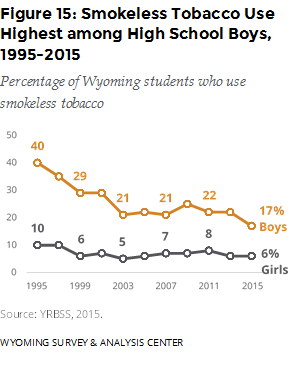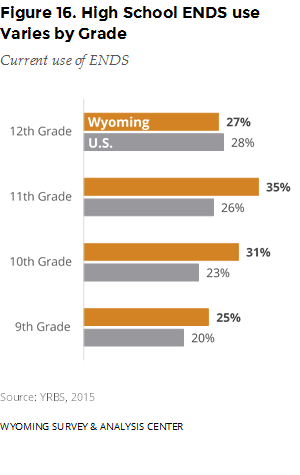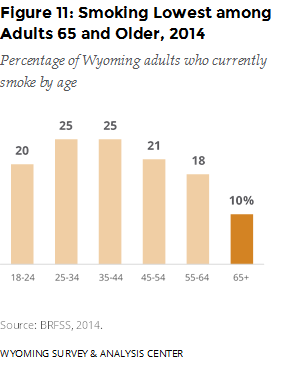Tobacco-Related Disparities
Smoking
Within age and education, two demographic groups stand out as having low smoking rates: adults 65 years of age and older (Figure 11)
and adults with a college degree (Figure 12). Wyomingites who are American Indian (including Alaska natives) are significantly more likely to smoke than Wyomingites who are White, Hispanic, or another race, which includes Black or African American, Asian, Pacific Islander, and other races (Figure 13; BRFSS, 2014).
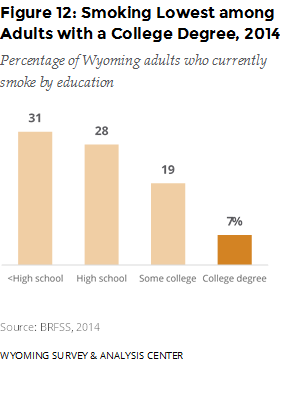
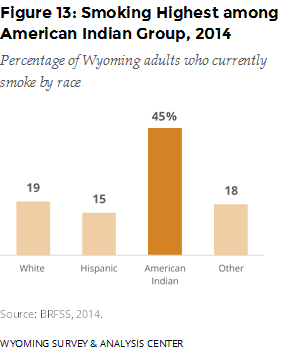
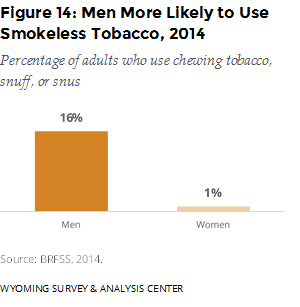 Smokeless Tobacco
Smokeless Tobacco
Unlike smoking (which does not show a statistically significant gender difference), men are more likely than women to use smokeless tobacco (Figure 14; BRFSS, 2014).
Disparities among Youth
In each iteration of the YRBSS (2015), high school boys in Wyoming have used smokeless tobacco at a significantly higher rate than high school girls. For boys and girls, the use of smokeless tobacco has significantly declined since 1995 (Figure 15).
In Wyoming in 2015, ENDS use varied by grade with a non-linear pattern. In the United States for the same year, there was a clearer pattern of current use increasing with grade level (Figure 16; YRBSS, 2015).
